If you know that there is water in your diesel fuel tank, it is important to take action. Water and diesel are not friends and shouldn't hang out together because bad things can happen. So, how do you get water out of a diesel fuel tank? We have taken the time to answer this question in this article!
There are different methods you can use to take water out of a diesel fuel tank. However, these two methods work the best:
- The first option is to siphon out the water contaminated fuel with a siphon kit using a hand pump. Make sure the hose is long enough to reach the bottom of the tank.
- Alternatively, you can add a fuel additive with a methanol base to help dilute the water fuel mixture. This method should only be used if there is a low trace of water in the diesel fuel tank.
When doing either method, be sure to remove the fuel filter to help drain any excess contaminated diesel fuel.
Water can get into a diesel fuel tank for various reasons. However, no matter how it got in there, the water must be removed from the diesel fuel tank one way or another. In this article, we will take a closer look at how to get water out of your diesel fuel tank. In addition, we will discuss the potential risks of water getting into fuel tanks, so read on!
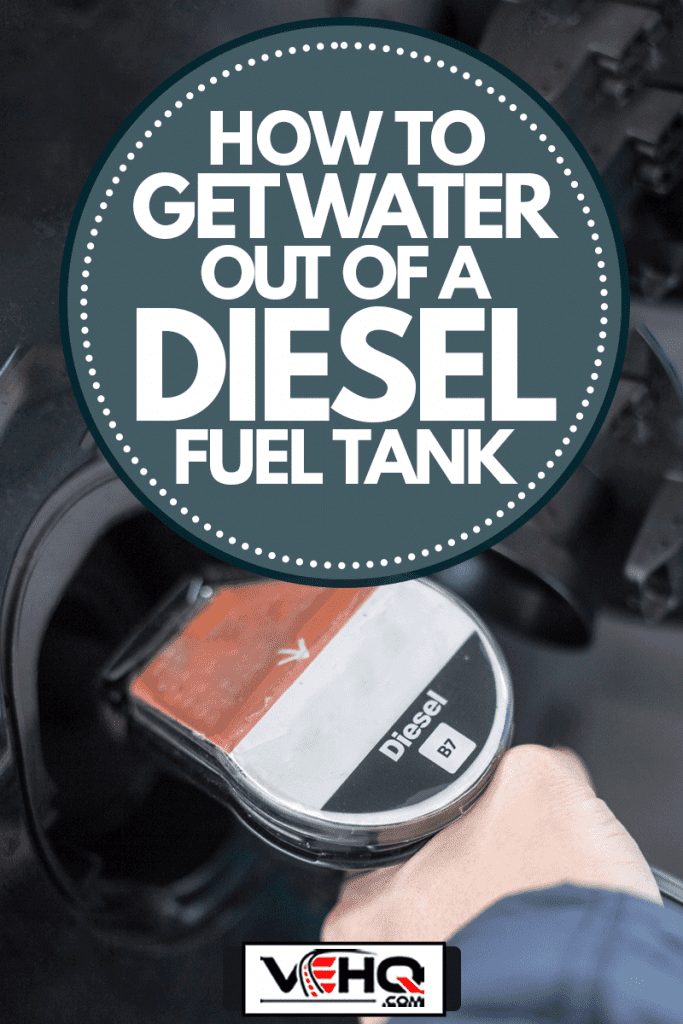
How To Get Water Out Of Diesel Fuel Tank
Water in a diesel fuel tank can pose problems to a motor vehicle's performance. Therefore, it is essential to get the water out of the diesel fuel tank as soon as possible. Let's take a look at the most common ways of doing so.
If there is only a tiny trace of water in the diesel fuel tank, it is possible to remove it by adding a fuel additive with a methanol base. Some additives may require you to add more than one bottle, so make sure you check the instructions before using this method.
Another way of getting water out of a diesel fuel tank is by siphoning out the water-contaminated fuel with a siphon kit and a hand pump. Make sure the hose is long enough to reach the bottom of the tank so that you can get all of the water out.
When doing either of these methods, be sure to remove the fuel filter drain the excess water-contaminated diesel fuel. In addition, check the motor vehicle's oil to see if it has been contaminated as well. If so, change it immediately after draining out water from a diesel fuel tank.
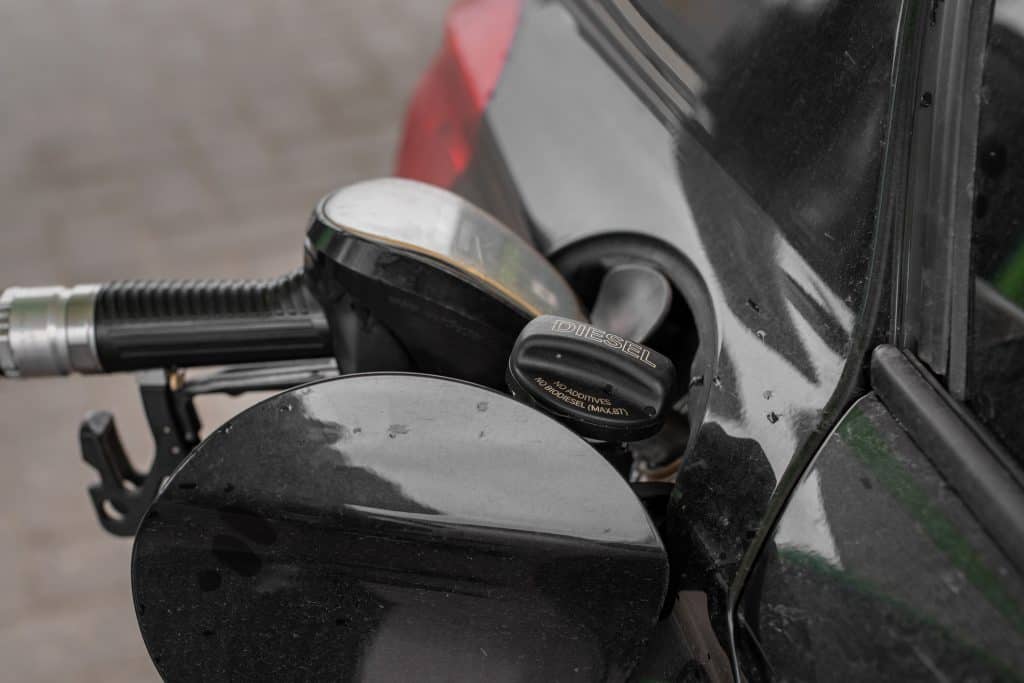
How does water get in the fuel tank?
There are many ways that water can get into the fuel tank. For example, dirt and road residue can settle onto your fuel tank when it rains or snows heavily. When this happens, the moisture in the air will work to expand the dirt particles. But, overall, condensation is the main culprit to water getting into a fuel tank.
Other examples include filling up your car with diesel at a gas station, and the fuel is contaminated with water. In addition, when you leave your car in a place with frequent rainfall or snowfall, this may result in moisture getting into the diesel fuel tank.
What happens when water gets in your diesel tank?
When you refuel your car and water settles into the fuel tank, it will mix with the diesel. The problem here is that once this happens, it can cause damage to your vehicle.
Motor Shuts Down
Eventually, enough water will get in there to where it would shut down the whole system of your car or truck. This means that either your fuel pump or your water sensor will be affected.
It is one of the big reasons why it is crucial to get rid of the water in your diesel fuel tank as soon as possible. The last thing that you want is to damage your engine by putting too much water inside.
Clogs Fuel Filters
Over time, the water in the diesel fuel mixes with the dirt and road particles. It will then form sludge and clog up your fuel filter. If this is not taken care of, you can end up having to replace it more than once. To avoid this from happening, remove water from a diesel engine tank as soon as you can.
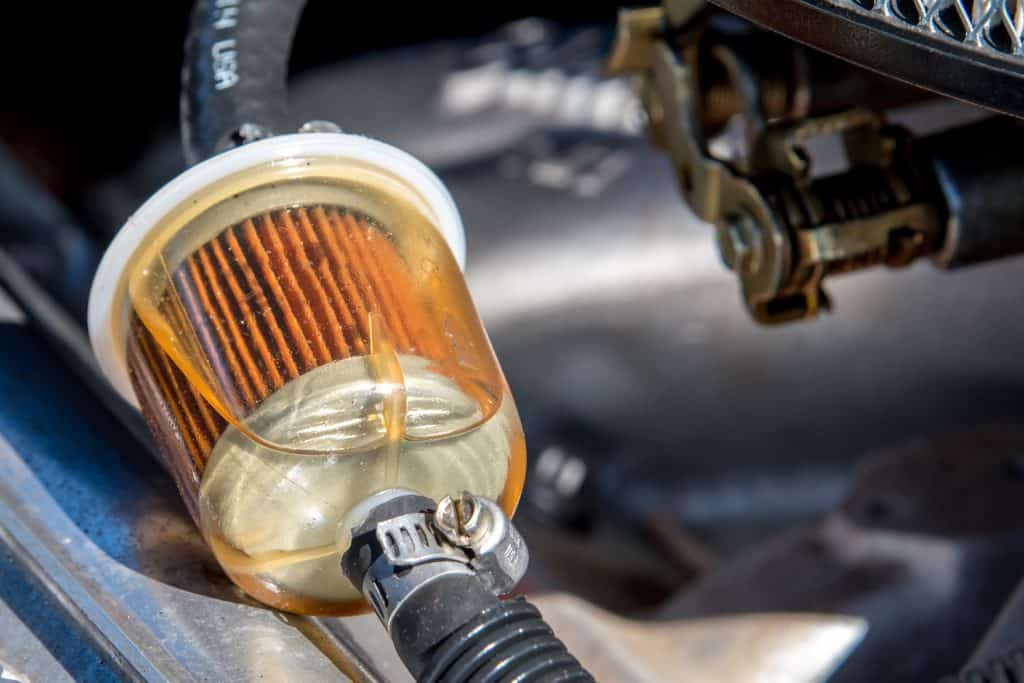
Blocks Fuel Injectors
Water in a diesel fuel tank will eventually cause diesel injectors to clog up. This can result in a loss of power from your engine and less performance overall. To avoid this, be sure to check for water in the diesel fuel tank before it gets too late.
Rust Steel and Iron Components
Water in a diesel fuel tank will eventually cause the steel and iron components to rust. For example, water in your fuel tank can rust up the bottom of your car. In other words, it will eat away at the material around your vehicle's gas tank.
Can water damage a diesel engine?
Yes. If you do not get rid of water in a diesel engine tank, it will lead to corrosion and rusting over time. Eventually, enough water can be present that can damage the actual components altogether.
To prevent this from happening, make sure to check your fuel filter each time you refuel your vehicle. It will stop any water from getting to your injectors and other essential components altogether.
In addition, make sure to use a fuel additive when refueling your car or truck at a gas station. This way, you can prevent water from ever getting into the diesel engine tank in the first place.
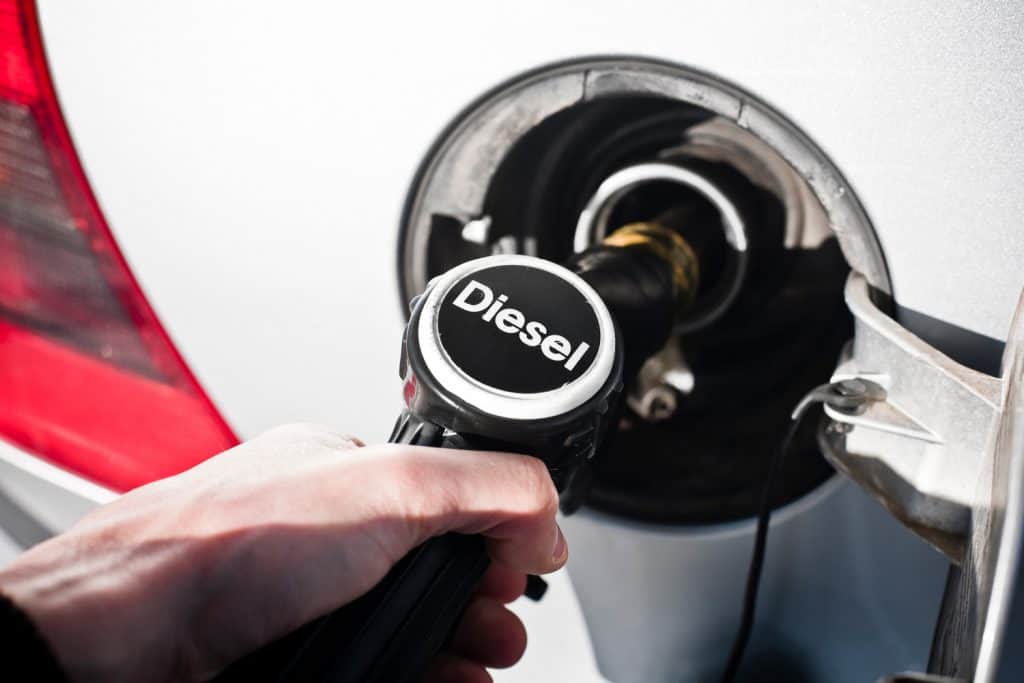
How to check for water in a diesel fuel tank
The fuel tank has a water sensor, and if the water level gets too high, it will shut off. This is why sometimes your vehicle's engine will stop running even though you have diesel in your tank.
The water levels rise into the line that runs from the top of your fuel tank to your engine. In other words, only fuel will be dispensed into your engine. The other issue is that too much water in the fuel tank can also cause damage to other components inside of the fuel system. These include the fuel injectors, which can be clogged and cause a lack of performance from your engine.
Suppose the water sensors in your fuel tank are signaling that there is a trace of water inside. Then take out a sample of the diesel and put it into a jar. Let it sit in the dark overnight.
The next day, look at the jar and if see if the liquids have separated. Diesel is lighter than water, and if there is a trace of water, it will have settled at the bottom of the jar. If this is the case, then your diesel fuel tank needs to be drained.
Symptoms of Water in Fuel Tank
Here are some symptoms that may indicate water is present. For example, if you notice these things, it might be time to remove water from a diesel fuel tank before it gets too late.
- Rough idling
- Engine hesitation when starting up your vehicle
- Black smoke from the exhaust
- Your engine runs roughly or unevenly
- You notice a musty smell coming from your vehicle when driving.
Check the water sensor and do the jar trick as mentioned abo if you have any of these signs.
Does Seafoam remove water from diesel?
Yes, Seafoam has been tested to remove water from diesel tanks. Many mechanics recommend using it due to its power in removing moisture from a diesel engine tank.
In other words, after you have added Seafoam into your tank, it will work hard at separating all of the fuel and any water particles. Then it will create a dry combustible mixture for your vehicle's engine to run on.
Final Thoughts
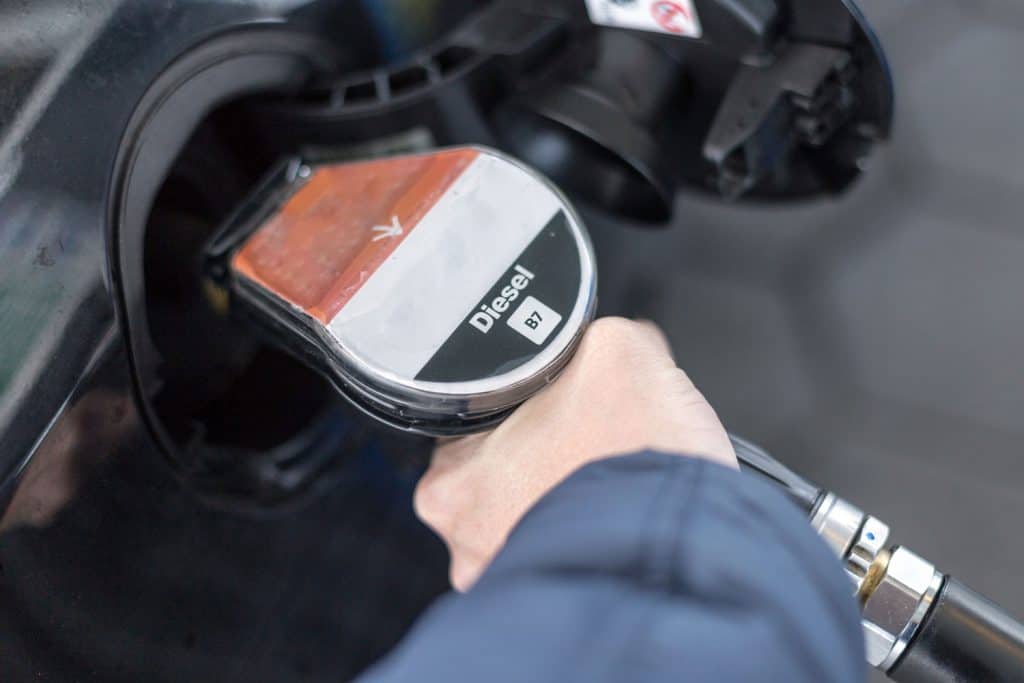
Water in a diesel fuel tank can be an issue. If not addressed, it will lead to problems down the road, including rusting of steel and iron, corrosion around your vehicle's gas tank, damage to injectors, clogging of filters, lack of power from your engine, and reduced performance overall.
To avoid these issues altogether, check your fuel filter and fill it up with a quality diesel additive at all times. Also, check your water levels in your fuel tank regularly to prevent this situation from ever occurring altogether.
If you liked this article, then it is worth also checking out:
Do Fuel Injectors Have Polarity? [Negative And Positive]
Do Fuel Tanks Have Drain Plugs?
Best Fuel Additives For Old Gas In Car
We would love to hear from you, so feel free to leave us a comment below!

trying to figure out why I’m still get a “water in fuel” light on my 2019 Ford F250 w/ 6.7 Diesel. I drained almost 2 full quarts of diesel out of my fuel-water separator – no evidence of water – pure diesel – yet I still get the caution light?